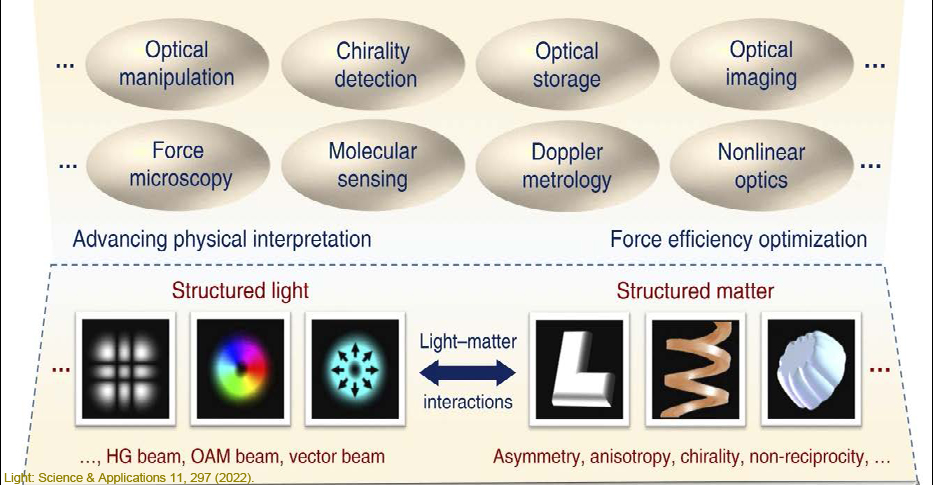
- Tipo de expresión:
- Doctorado: Propuesta de dirección de tesis doctoral/temática para solicitar ayuda predoctoral ("Hosting Offer o EoI")
- Ámbito:
- Ciencias Físicas. Nanofotónica
- Área:
- Materia
- Modalidad:
- Ayudas para contratos predoctorales para la formación de doctores (antiguas FPI)
- Referencia:
- 2023
- Centro o Instituto:
- INSTITUTO DE MICRO Y NANOTECNOLOGIA
- Investigador:
- ANTONIO GARCIA MARTIN
- Palabras clave:
-
- interacción luz-materia, fuerzas ópticas, nanofotónica, magneto-óptica, metasuperficies, plasmónica, estados ligados en el continuo, enlace óptico
- Documentos anexos:
- 606787.pdf
PRE2023-Exploring light-matter interactions & forces in complex particle arrays (LIGHTCOMPAS)-PID2022-137569NB-C41
The aim of the proposal is the development of theories, concepts models, and computational tools to explain and understand the rich phenomenology that emerges from the interaction of light with complex systems exhibiting various optical responses, and the optical forces exerted on them.
We will focus on complex arrays (metasurfaces), particles with unconventional responses (magneto-optics, chirality and thermal-phase transitions) and non-trivial fields (structured light). The interaction of light with such matter leads to the appearance of a rich phenomenology stemming from the complex morphology, structure, and/or electromagnetic response.
Main objectives for the predoctoral period:
O.1. Metasurfaces
To study both passive (geometry and optical source) and active (external agents) controlling mechanisms in complex planar arrays, we will extend our Coupled Electric-Magnetic Dipole (CEMD) approach to account for a variety of complex geometries and active media. Care has to be taken to incorporate certain optical responses in the dipolar response of the meta-atom (particles). In principle, we plan to address magnetic, electric and thermal control through various materials.
O.2. Dichroism in structured materials
Here we will consider MO-chiral structures. We will analyze how chirality affects the optical torque. Moreover, we will obtain the optical force exerted dipole when the system is embedded in a constant magnetic field and an isotropic random electromagnetic field.